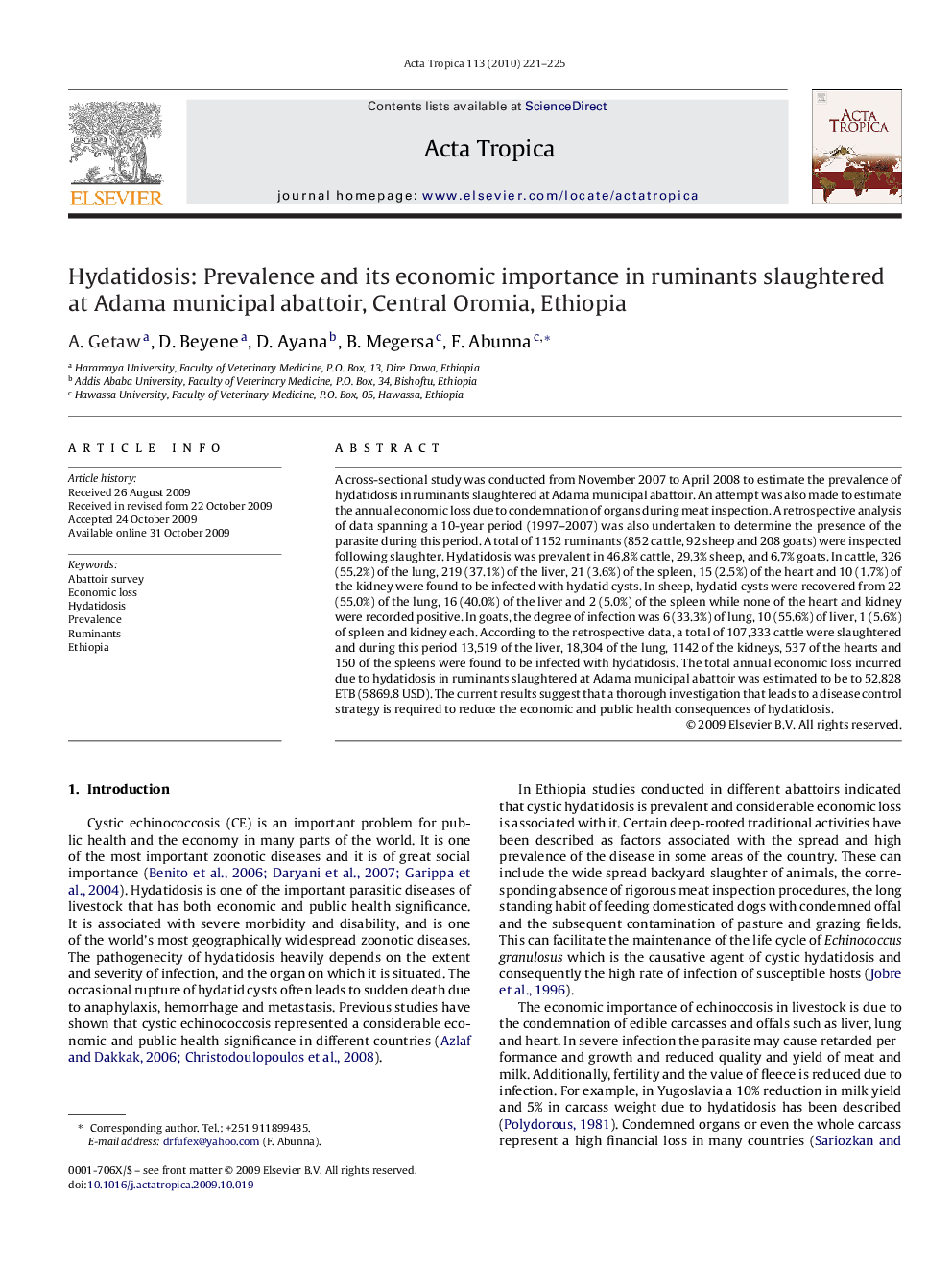| Article ID | Journal | Published Year | Pages | File Type |
|---|---|---|---|---|
| 3394193 | Acta Tropica | 2010 | 5 Pages |
A cross-sectional study was conducted from November 2007 to April 2008 to estimate the prevalence of hydatidosis in ruminants slaughtered at Adama municipal abattoir. An attempt was also made to estimate the annual economic loss due to condemnation of organs during meat inspection. A retrospective analysis of data spanning a 10-year period (1997–2007) was also undertaken to determine the presence of the parasite during this period. A total of 1152 ruminants (852 cattle, 92 sheep and 208 goats) were inspected following slaughter. Hydatidosis was prevalent in 46.8% cattle, 29.3% sheep, and 6.7% goats. In cattle, 326 (55.2%) of the lung, 219 (37.1%) of the liver, 21 (3.6%) of the spleen, 15 (2.5%) of the heart and 10 (1.7%) of the kidney were found to be infected with hydatid cysts. In sheep, hydatid cysts were recovered from 22 (55.0%) of the lung, 16 (40.0%) of the liver and 2 (5.0%) of the spleen while none of the heart and kidney were recorded positive. In goats, the degree of infection was 6 (33.3%) of lung, 10 (55.6%) of liver, 1 (5.6%) of spleen and kidney each. According to the retrospective data, a total of 107,333 cattle were slaughtered and during this period 13,519 of the liver, 18,304 of the lung, 1142 of the kidneys, 537 of the hearts and 150 of the spleens were found to be infected with hydatidosis. The total annual economic loss incurred due to hydatidosis in ruminants slaughtered at Adama municipal abattoir was estimated to be to 52,828 ETB (5869.8 USD). The current results suggest that a thorough investigation that leads to a disease control strategy is required to reduce the economic and public health consequences of hydatidosis.
